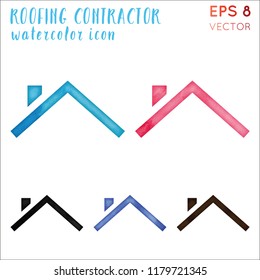Methodical Approach To Preparing Your Walls Prior To Paint
Methodical Approach To Preparing Your Walls Prior To Paint
Blog Article
Article By-Nance Pacheco
When you're prepping your wall surfaces for paint, it's essential to follow a systematic process to make sure a remarkable surface. Start by taking a look at the wall for any kind of damage; this action can make or break your job. When you've identified any kind of concerns, cleansing the surface properly is important, as a filthy wall can affect paint attachment. Afterwards, you'll require to spot any blemishes and use a primer. But there are https://painter-near-me32086.bloggazzo.com/32384034/unlock-the-capacity-of-color-and-design-by-mastering-the-dos-and-do-n-ts-of-accent-walls-disclosing-the-tricks-to-crafting-a-vibrant-statement-in-your-environment and ideas that can elevate your prep work video game-- allow's explore those further to achieve the very best results.
Assessing Wall Surface Condition
Before you get your paintbrush, take a moment to analyze your walls' problem. Check for any kind of noticeable damages like splits, holes, or peeling off paint. visit site can affect just how the paint sticks and looks once it's completely dry. If you notice any type of substantial damage, you'll need to focus on fixings before diving into paint.
Look carefully at the texture of your wall surfaces. Is the surface area smooth, or exists texture that might require unique factor to consider? Smooth wall surfaces generally require much less preparation, while distinctive surfaces might require even more time to repaint uniformly.
Also, think about the previous paint job. If portland commercial painters is glossy, it mightn't enable new paint to stick effectively. You'll want to know if your walls have been painted with oil-based or water-based paint, as this can influence your choice of guide or paint.
Ultimately, keep in mind of any type of dampness problems. If you see signs of water damage or mold, address these problems instantly to avoid additional difficulties.
Cleaning the Surface
When you've assessed the condition of your wall surfaces, the next step is cleansing the surface area. Start by collecting your products: a bucket, warm water, a moderate detergent, a sponge or cloth, and a scrub brush for tougher areas.
Begin on top edge of the wall and work your method down. Mix the cleaning agent with warm water in your container, after that dip the sponge or fabric right into the option. Wring it bent on stay clear of extreme dampness on the walls.
As you clean up, pay close attention to areas that could've gathered dust, grease, or fingerprints. For persistent spots, make use of the scrub brush gently to stay clear of damaging the paint below. Rinse your sponge or towel often in tidy water to prevent spreading out dust around.
After cleansing, it's vital to clean the wall surfaces with a wet fabric to remove any soap deposit. This action makes sure a smooth surface for the new paint to adhere to.
Permit cabinet painting tigard to dry totally prior to moving on to the next preparation actions. This complete cleaning procedure will aid develop a fresh canvas for your painting job, ensuring the very best outcomes.
Patching and Priming
Patching and priming are essential action in preparing your walls for a fresh coat of paint. First, examine your walls for any type of openings, splits, or imperfections. Utilize a high-quality spackling substance or patching paste to fill these areas.
Apply the compound with a putty knife, smoothing it out so it's flush with the surrounding surface area. Allow it to completely dry entirely, and afterwards sand it gently until it's smooth and even.
Once you have actually covered every little thing, it's time to prime. Primer assists secure the patched areas, guaranteeing the paint sticks appropriately and provides a consistent surface. Select a primer ideal for your wall surface kind and the paint you'll be making use of.
Apply the primer making use of a roller for bigger locations and a brush for edges and sides. If your covered areas are considerably huge or permeable, you might wish to use a 2nd coat of guide after the very first one dries out.
After priming, allowed every little thing completely dry extensively before moving on to paint. This preparation won't only enhance the look of your wall surfaces however likewise prolong the life of your paint work.
Take your time, and you'll be pleased with the outcomes.
Verdict
By adhering to these basic actions, you can accomplish a smooth and professional coating on your wall surfaces. Begin by examining their problem, then clean and spot any type of flaws prior to applying guide. Keep in mind to permit appropriate drying time and ensure everything is smooth before you study paint. With the right preparation, you'll set the stage for a stunning transformation in your area. Currently, gather your products, take in the fresh air, and prepare to paint!
